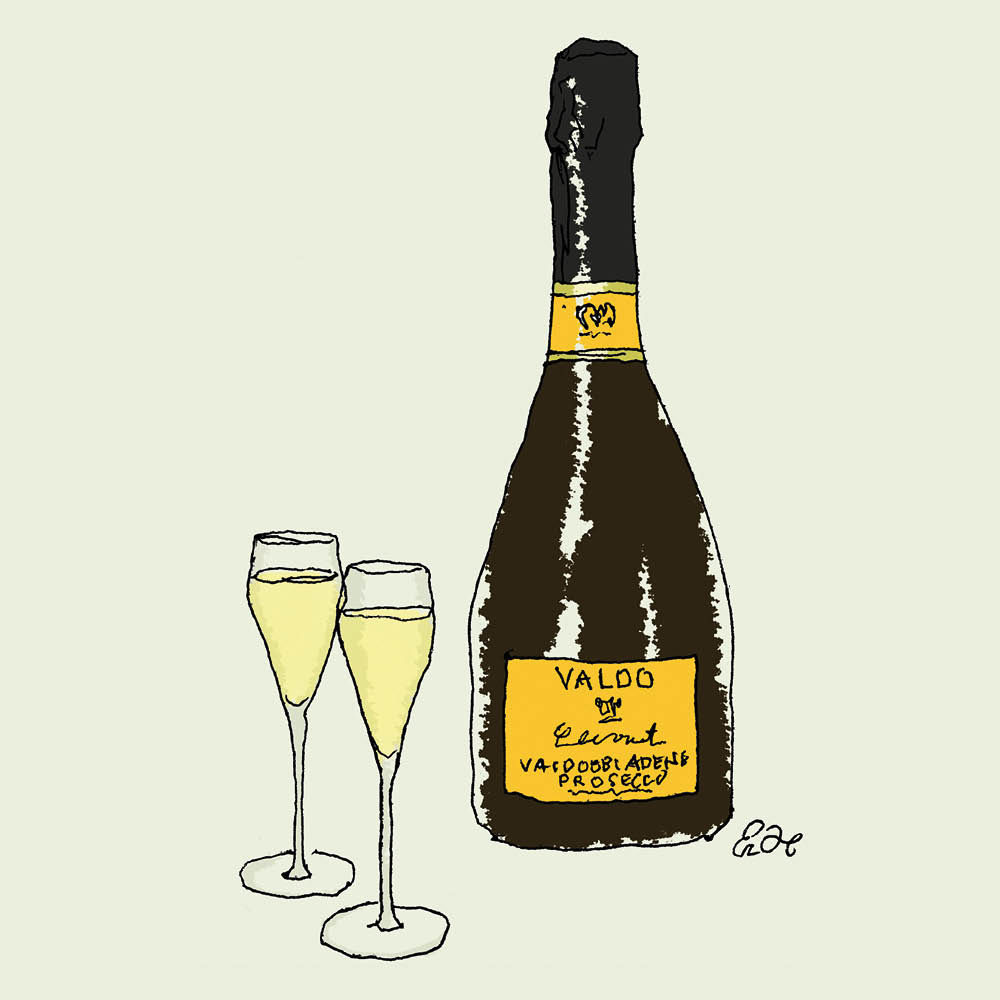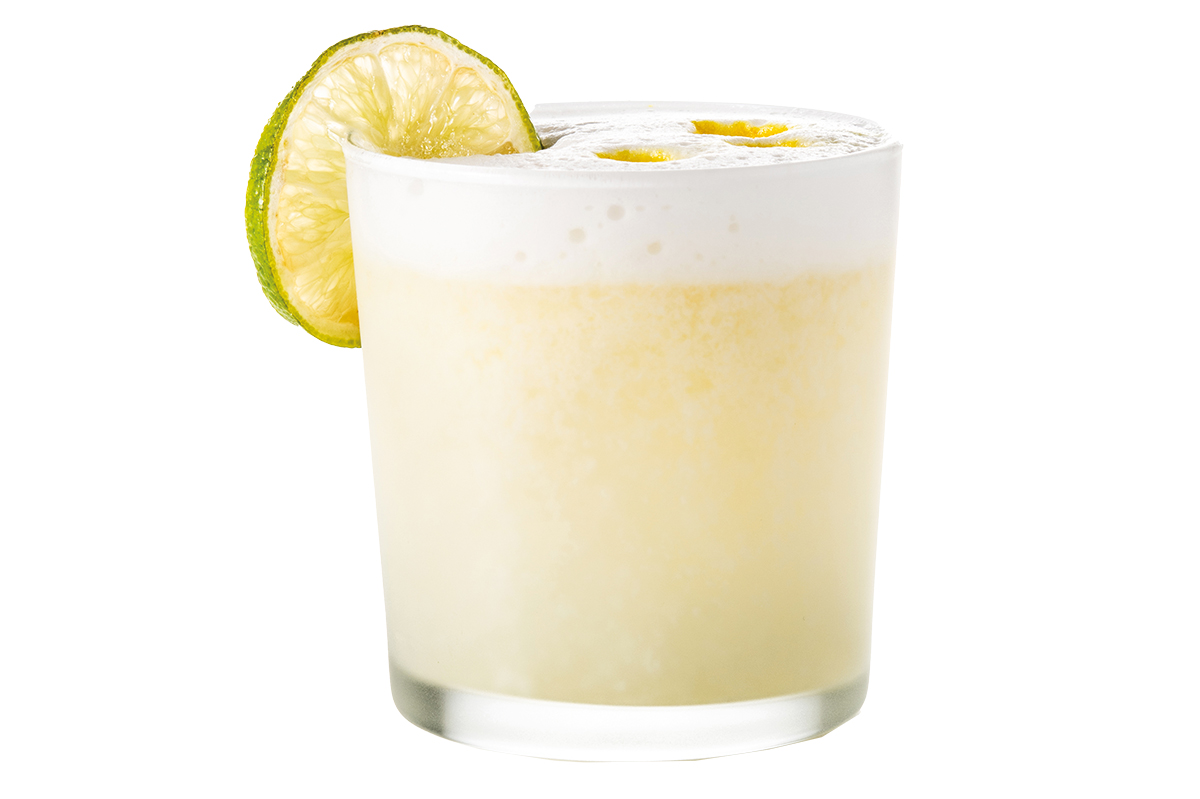Compromises are odious. They reek of disappointments both large and small, when no one really gets his way — there’s never a loser per se, but also rarely a winner.
But very occasionally, seemingly disparate concepts can come together and create a new thing that is technically a compromise but ends up feeling like more than the sum of its parts, thanks to felicitous, and often impossible to predict, synergies. See: the bánh mì sandwich, the Constitution of the United States, Disney and Pixar.
And now: Prosecco.
The world’s favorite cheap, cheerful, reliably tasty tipple is dipping its toes into profundity — and the results are surprisingly successful. When a globally successful pop star who is known and beloved for her mesmerizing T&A as much as for her singing chops tries her hand at opera, the world generally cringes. But here, it chugs.
The vast majority of the 936 million bottles of Prosecco consumed in 2023 were made in the Charmat method. But a wee sliver were made either Col Fondo or in Méthode Champenoise. According to Franco Adami, president of Italy’s first sparkling wine district, the Consorzio di Tutela del Conegliano Valdobbiadene, that year around 93,000 bottles were made Col Fondo, and an even smaller number were made in the Méthode Champenoise.
The results of both solemn, thoughtful expressions of one of the world’s great but indubitably whimsical and fun grapes, bear the imprints of the Glera grape’s character and the deadly serious methods in which the wines are made.
Prosecco has existed for almost as long as Champagne. In the beginning — written records date back to 1754 — Prosecco, from the northeastern areas of the Veneto and Friuli-Venezia Giulia, was made “Col Fondo.” This is analogous to the French Méthode Ancestrale, in which the fermentation process is halted and the wine is bottled, completing its secondary fermentation in the bottle, with the lees remaining in the bottom.
In 1895, that mostly changed with the invention of the Charmat Method. This also entails an initial in-tank fermentation process, but instead of going into the bottle, the wine goes through a secondary fermentation in a pressurized tank. This makes it possible to produce larger quantities of wine much faster.
Some winemakers continued to make small quantities of Prosecco Col Fondo, because, well invent your reason, but my reason is that they secretly believe it’s better. Not that anyone would ever imperil the golden goose of Charmat Prosecco by busting out with that on the record. Believe me, I tried.
“The Charmat Method capitalizes on the freshness and brightness of the Glera grape, which is why it’s so popular,” notes Brian Larky, founder of Dalla Terra, a direct importer of wine and spirits, including Adami Prosecco, which makes a Col Fondo. “But when it’s made Col Fondo, it’s fascinating to see how it evolves in the bottle, because it’s still on the lees.”
Prosecco made in the Méthode Champenoise, meanwhile, is even more controversial because, well, the French. This technique entails bottling still wine without the addition of yeast or sugar. Wine ferments until dry, with the yeast fermenting the sugar into alcohol, creating bubbles.
Throughout the process, the bottle is turned and angled, so that the dead yeast cells — lees — settle in the neck. The wine is disgorged, the lees are ousted, a blend of sugar and wine — dosage — is added.
The wine is then corked and aged in the bottle.
Making Prosecco like they do in Champagne, from a philosophical standpoint, is akin to making some sort of “pasta e fasioi meets soupe à l’oignon” mash-up — grotesque!
And yet it’s happening. About twenty years ago, the team at Valdo began making some of their Prosecco in Méthode Champenoise.
“It was controversial,” admits Matteo Bolla, a member of the fifth generation of the family running the Prosecco brand, and Valdo Valdobbiadene’s business development manager. “In the early years, the sparkling wine produced with this method was not certified as Prosecco, as there were fears it would not be accepted by the tasting committee of the consortium.”
Today, it is certified as Prosecco Superiore DOCG, the highest classification of Italian wine, and one only seventy-seven possess. Still, it’s only a 25,000-bottle drop in their vast bucket of production — and it requires a certain level of aficionado-level appreciation to understand what’s happening in the glass.
Or does it?
As an experiment, I brought a bottle of the MC to a recent gossip session with fellow hyper-busy working mothers, none of whom work in the wine industry or have the time to obsessively pore over and consider the intricacies of wine production and terroir in their “spare time.”
I presented the bottle without comment and poured, expecting nothing more than the appreciative murmur of acknowledgement we all give when taking our first sip of fermented whatever together, eager to overshare on the perceived wrongs that have been committed against us, secure in the knowledge that all of our delusional notions will swiftly be supported. Thanks, besties.
But these — admittedly intelligent and observant — women with palates that are known to occasionally welcome the Robitussin-vodka tang of White Claw, instantly knew something was up.
“What’s going on with this sparkling wine?” asks a lawyer who works with underrepresented populations.
“What do you mean?” says I, badly feigning innocence.
I receive withering looks.
“Tell us,” orders an engineer who makes clocks as a hobby for “fun.”
And so I try. But I can’t put my finger on how the Méthode changes what’s going on in the glass.
“It’s like a summer fruit salad crossed with an aged Champagne,” says the lawyer.
The perfect tasting note.
“How much does it cost?” inquires the engineer.
Around $30, often a bit less.
“This is a bridge,” declares the engineer. “A bridge between Prosecco and Champagne. Something you can enjoy in a serious way, but don’t have to feel bad about opening without an actual occasion.”
It would also, we agreed, be the kind of unicorn wine that could garner approval from inexperienced young drinkers and know-it-alls, thanks to its wallet-friendly nature and versatile flavor profile.
Larky agrees. “For both of these types of Prosecco, the grapes are generally grown on supersteep Rive [steep terrain, and a subzone within Valdobbiadene], with really interesting soils, elevations and exposures,” he says. “Often sourced from single vineyards. By allowing these premium grapes time on the lees, you develop yeasty, umami flavors and incredible complexity that only improves over time.”
Plus, he points out, it’s not $150 a pop like grower Champagne.
Sipping Prosecco made Col Fondo or Méthode Champenoise is kind of like listening to Taylor Swift.
You’re at once impressed by its addictive, propulsive joy, while simultaneously captivated by the poetry hidden in its complex notes.
If you like pop with a side of poetry, you know what to do. (And crank up The Tortured Poets Department for the perfect pairing.)
This article was originally published in The Spectator’s October 2024 World edition.























Leave a Reply